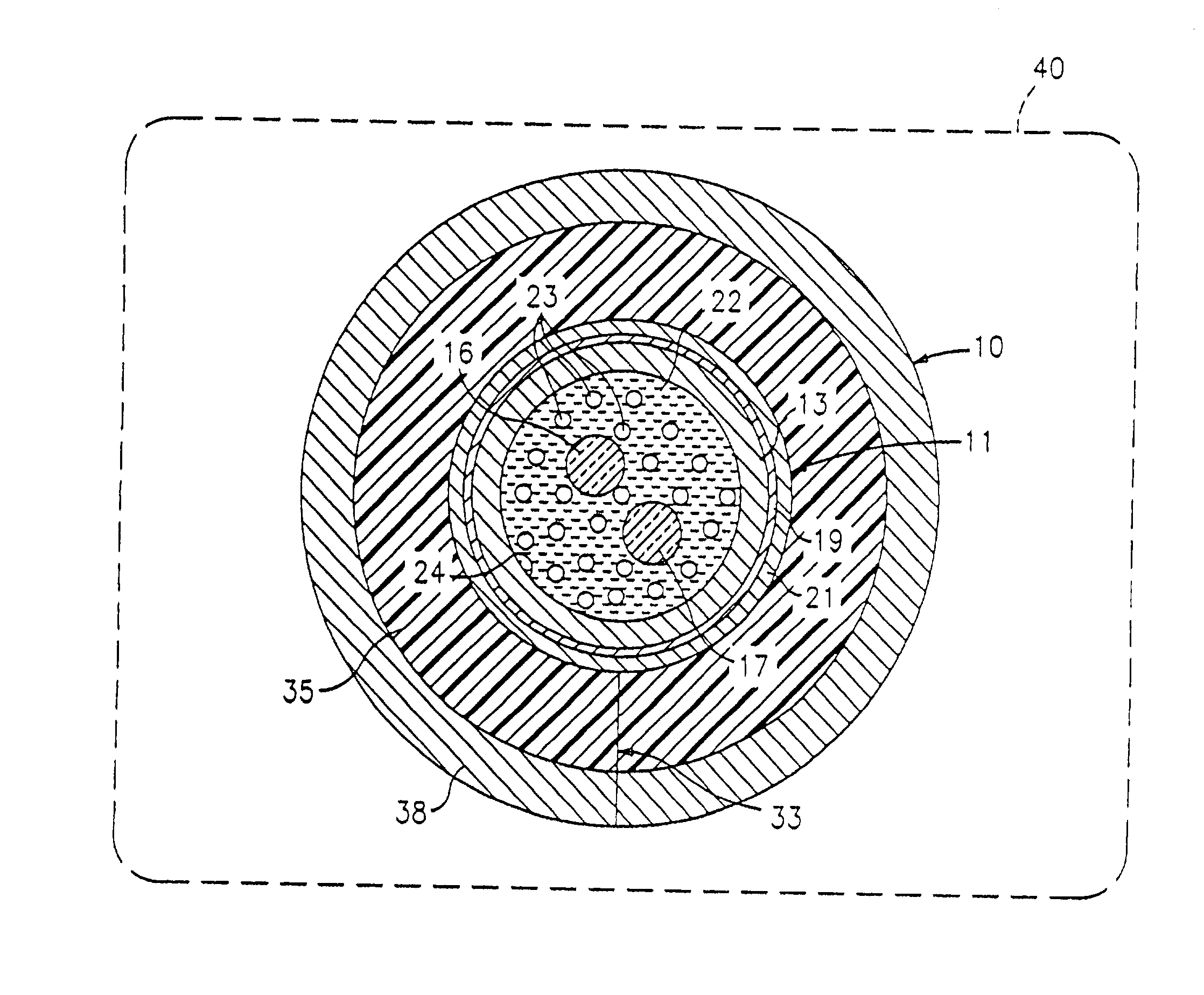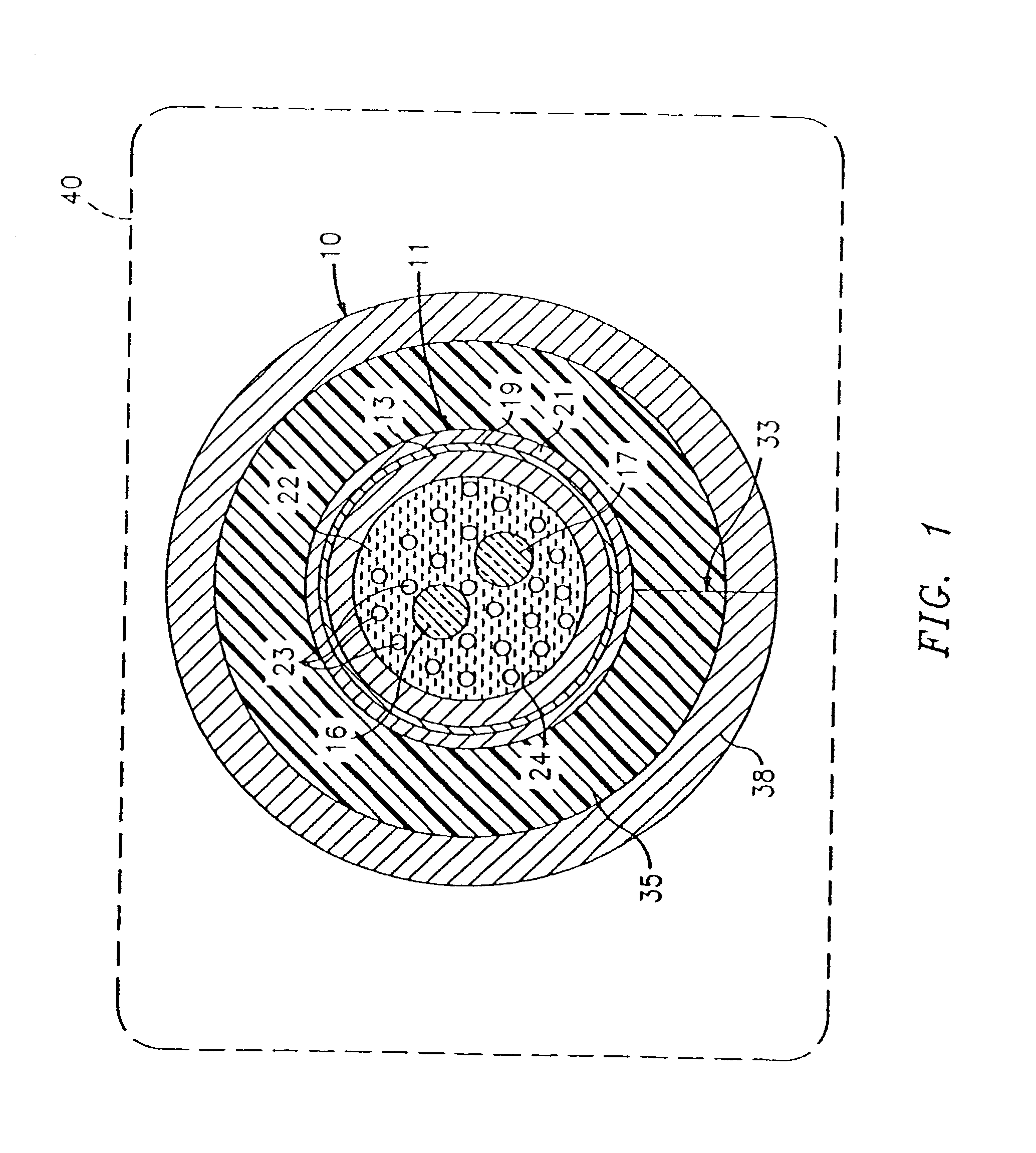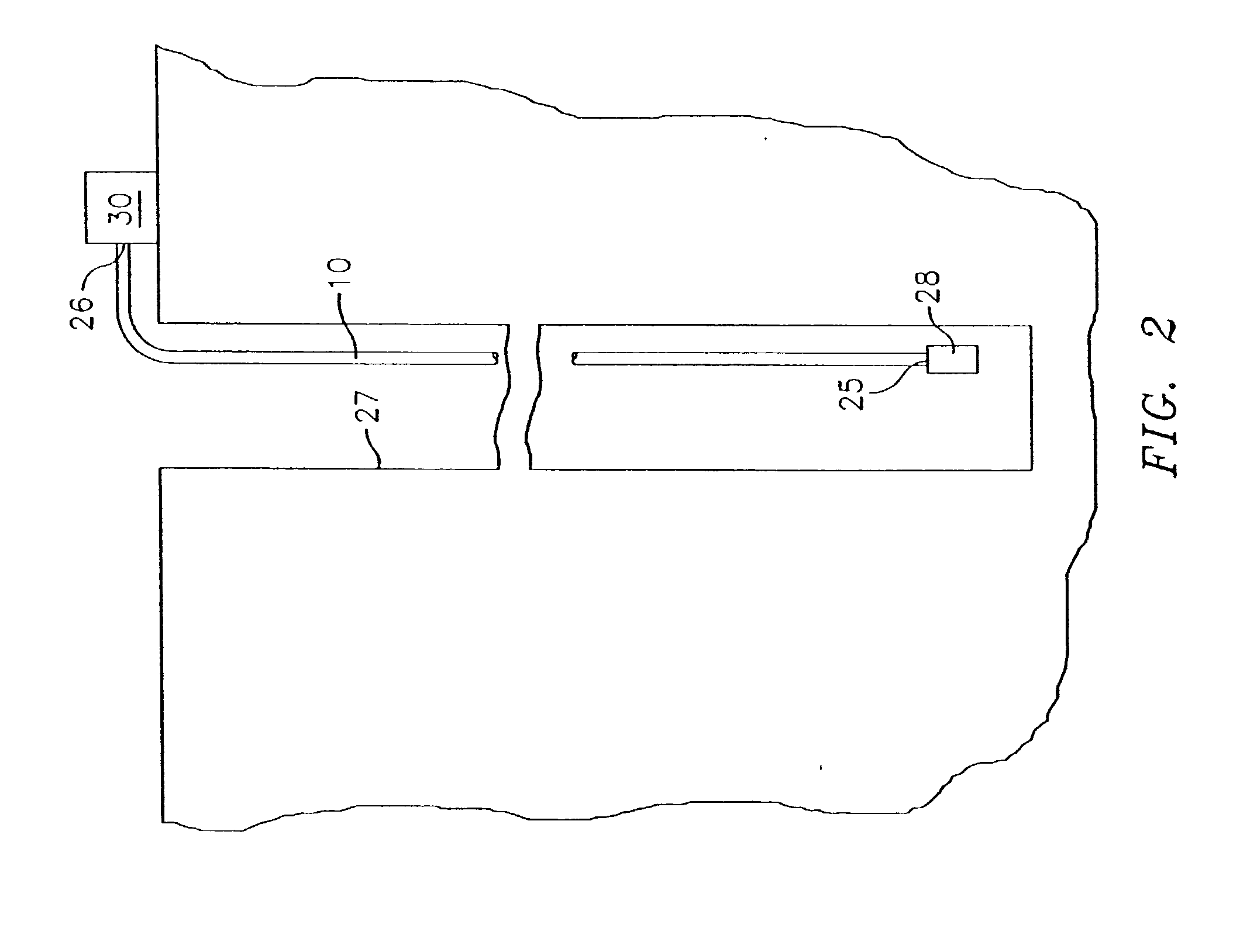Optical fiber cable for use in harsh environments
a fiber optic cable and harsh environment technology, applied in the field can solve the problems of optical fiber loss resistance to hydrogen, optical performance of optical fiber, and high design requirements of fiber optic cables, and achieve the effects of low hydrogen permeability, low cost, and low cos
- Summary
- Abstract
- Description
- Claims
- Application Information
AI Technical Summary
Benefits of technology
Problems solved by technology
Method used
Image
Examples
Embodiment Construction
[0017] Referring now to FIG. 1, a fiber optic cable 10 manufactured in accordance with the present invention includes a fiber in metal tube (FIMT) core II having an inner tube 13 surrounding one or more optical fibers 16, 17. The inner tube 13 may be a laser welded tube, e.g., a length-wise laser welded tube, manufacture from a corrosion resistant material, such as a corrosion resistant metal alloy. Examples of suitable corrosion resistant metal alloys include, but are not limited to; Stainless Steel 304; Stainless Steel 316; Inconel 625; Incoloy 825. The inner tube 13 diameter may be in the range of 1.1 to 2.6 mm, and in an exemplary embodiment of the invention is 2.4 mm. Although the inner tube is described as being 1.1 to 2.6 mm in diameter, the diameter of the inner tube may vary over a large range, depending upon the materials used and the number of optical fibers to be placed in the inner tube. The inner tube 13 wall thickness is selected to be sufficient for the laser welding...
PUM
 Login to View More
Login to View More Abstract
Description
Claims
Application Information
 Login to View More
Login to View More - R&D
- Intellectual Property
- Life Sciences
- Materials
- Tech Scout
- Unparalleled Data Quality
- Higher Quality Content
- 60% Fewer Hallucinations
Browse by: Latest US Patents, China's latest patents, Technical Efficacy Thesaurus, Application Domain, Technology Topic, Popular Technical Reports.
© 2025 PatSnap. All rights reserved.Legal|Privacy policy|Modern Slavery Act Transparency Statement|Sitemap|About US| Contact US: help@patsnap.com



